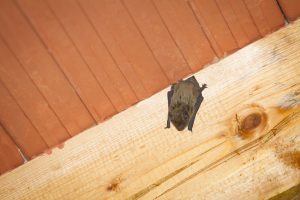❶ Contact a Wildlife Removal Professional
The first step to take when you have a bat in your house is to contact a local wildlife management company that provides bat removal and control services. They can give you instructions on what to do while you wait for them to arrive, whether that be the same day or the next. They may also be able to give you some over-the-phone instruction on how to give them certain information about the situation. You can be their eyes and ears until they can undertake the bat removal process themselves. This will allows them to get an idea of what to expect, and give them a head start on developing a strategy for extraction.
❷ Isolate the Bat
Once you have contacted a trained professional, you may have to wait a little for them to arrive. For companies who offer 24 hour service, you may only need to wait a few hours or so. But for those who do not, you may have to wait until the next business day. So while you wait, you can choose to help the situation by isolating the bat to one area of the home. So if it is in the basement, simply shut the basement door until the contractor arrives.
Do not use a stick or anything else to “persuade” the bat to move to another spot. You never want to risk harming a bat; they are vital parts of our surrounding ecosystem, and in some places, they are protected by law. Instead, if a bat is in an open area of a home that is not easily shut-off, simply close all doors to all other rooms so that it cannot enter another area of the home; and then send your family to one of the closed-off rooms for protection. Be sure to send your cats and dogs too (not just for their own safety, but for the safety of the bat as well).
❸ Provide an Exit
Once all doors are shut and everyone is protected, turn off all interior lights in the main area of the home where the bat is hanging out. Then open a door and turn on the exterior light, and wait to see if the bat flies out. Often times, they do. If they do not, simply join your family in a bat-free room until help arrives.


